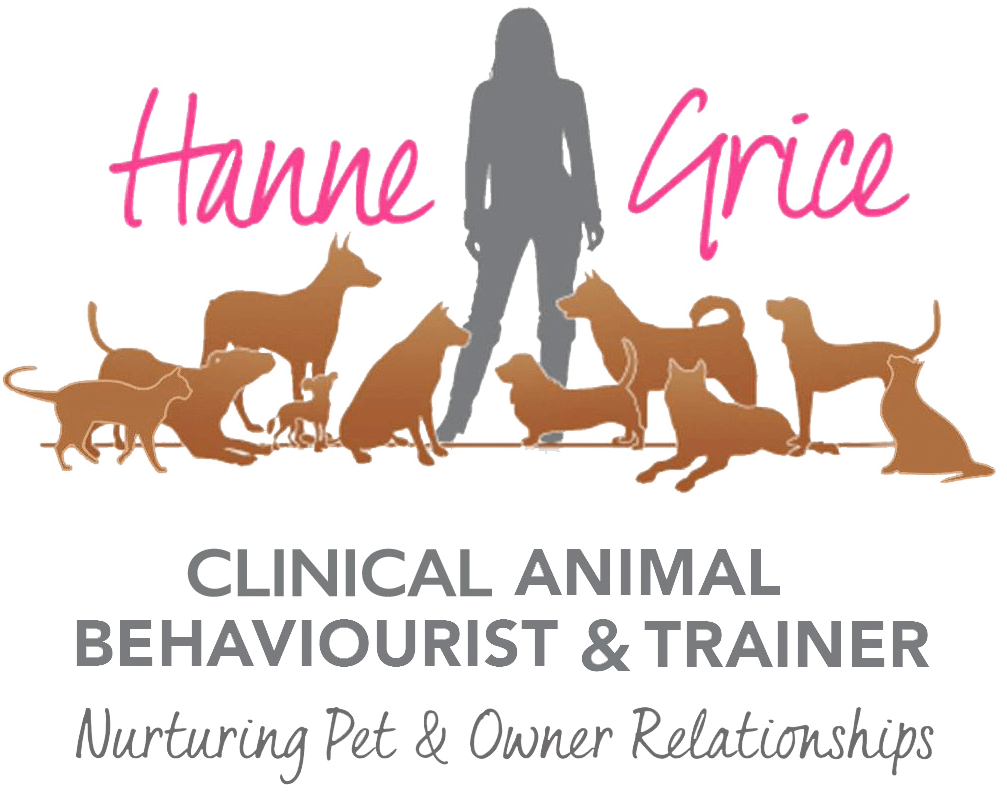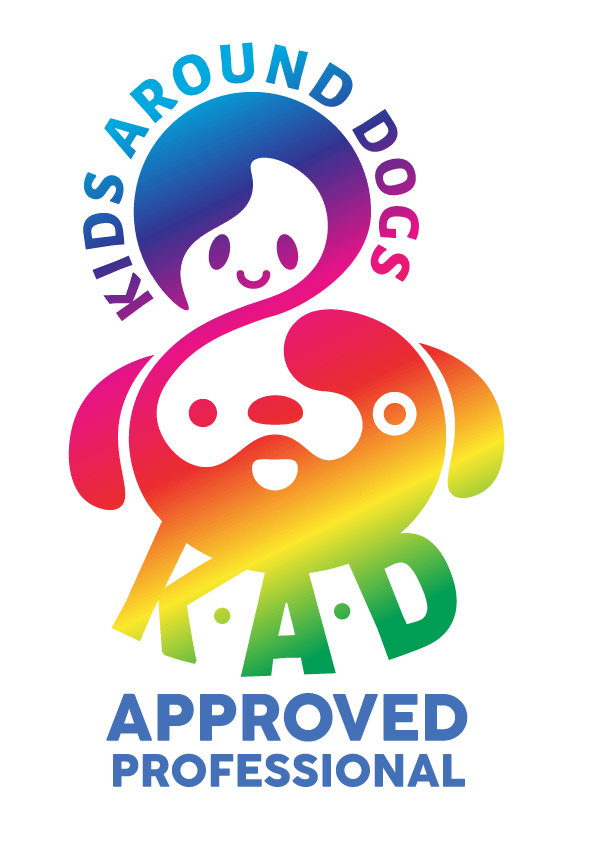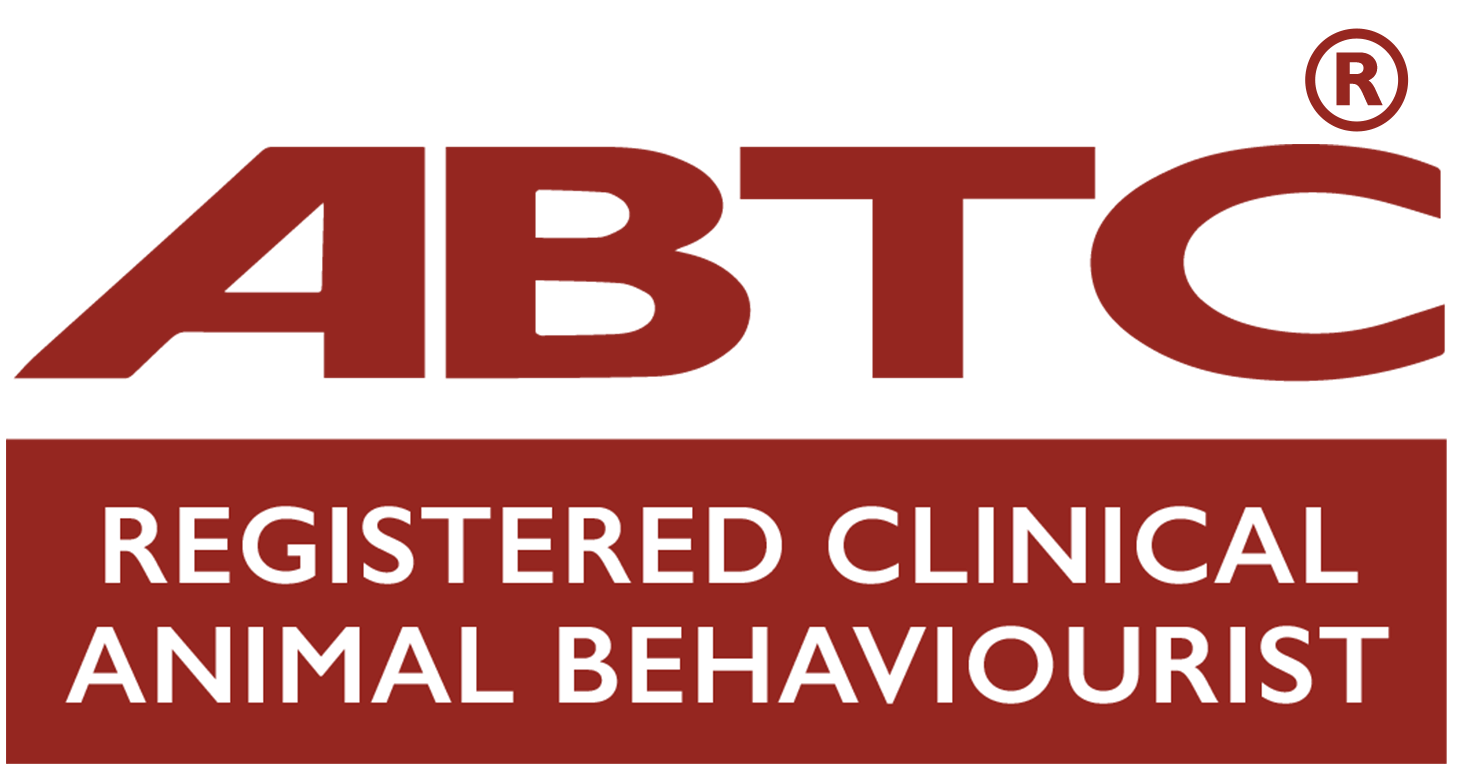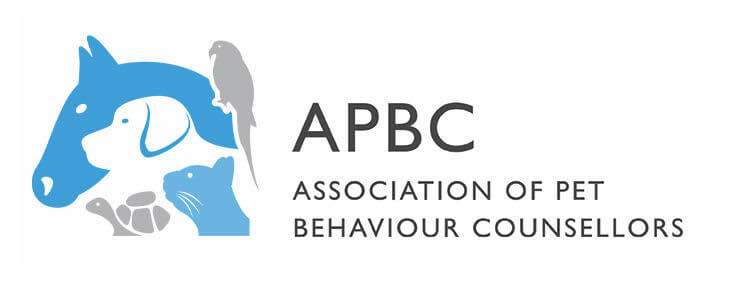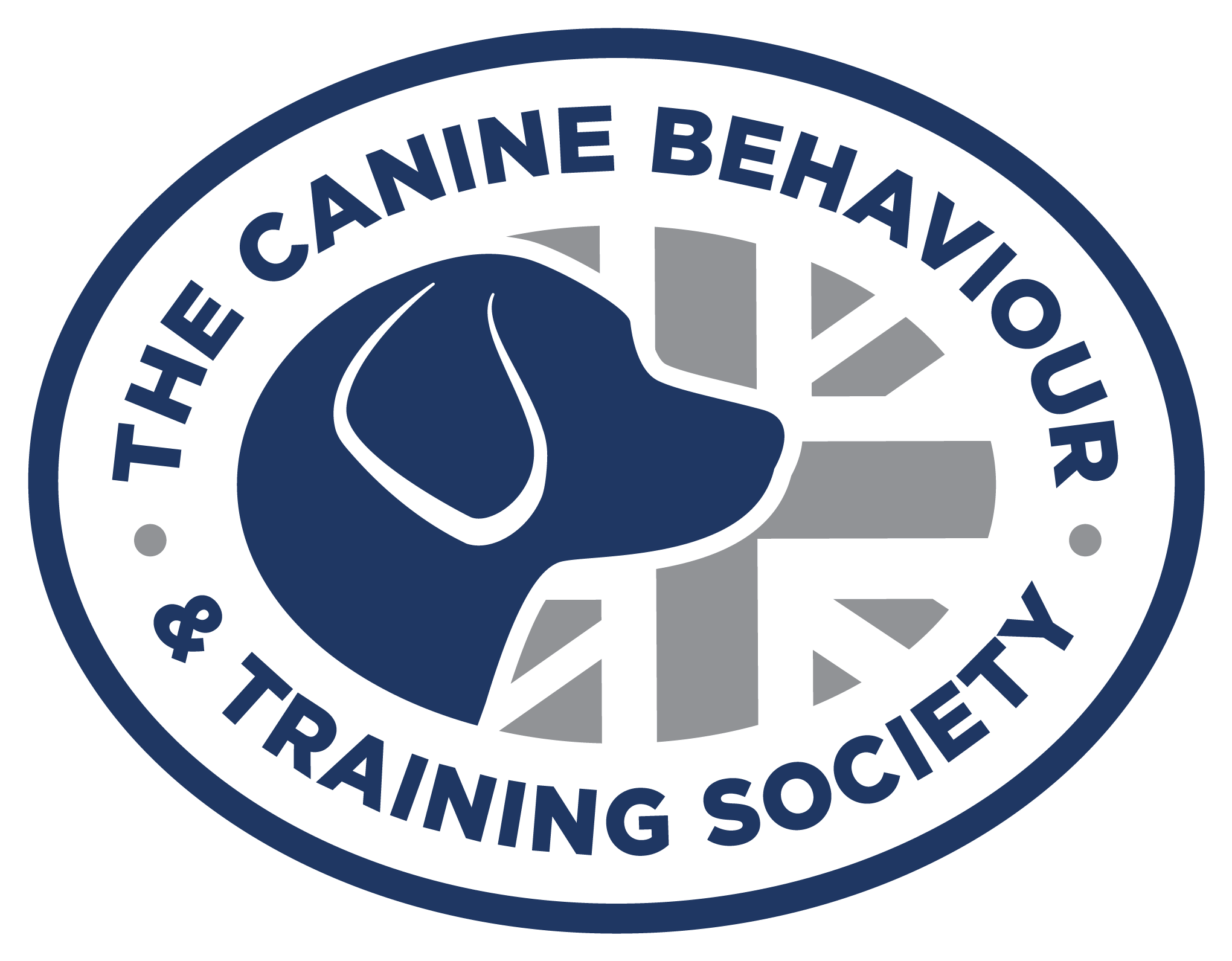Stereotypies are considered to be repetitive movements or sounds that do not vary and seem to have no end goal or obvious function. In humans, stereotypies can include body rocking, head nodding, finger tapping, or more complex movements such as arm and hand flapping, waving, or pacing.
Although the causes of stereotypic behaviour are often unknown, they often tend to be caused by the animal’s repeated attempts to adapt to their environment. This could include attempting to adapt to the size and design of facilities where the animal is kept, or adapt to the quantity and quality of food the animal receives and feeding schedule. Or it may be an attempt to adapt to the temperature and humidity, light intensity, or the noise and sound levels in which they are exposed to, and so on.
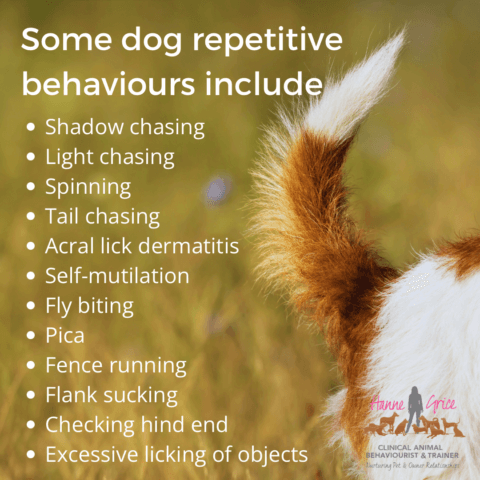
Dogs may display repetitive actions, such as shadow chasing, light chasing, spinning, spinning/tail chasing, acral lick dermatitis (ALD), self-mutilation, fly biting, pica, fence running, flank sucking, checking hind end, and excessive licking of objects (Frank, 2013); and this has been the subject of numerous studies. For example, Sulkama et al. (2022) looked at repetitive behaviours exhibited by dogs, ranging from normal to abnormal patterns. This comprehensive study collected data from nearly 4,500 Finnish pet dogs and highlighted some of the primary drivers behind repetitive actions in dogs. These included
- Comparative analysis with human obsessive compulsive disorder: The researchers found parallels between canine repetitive behaviours and human Obsessive-Compulsive Disorder (OCD). Similarities included early age of onset, behavioural inflexibility, and structural brain abnormalities. Medications like fluoxetine and clomipramine, were used to treat these behaviours in dogs – the same medications that may also be used for human OCD.
- Comorbidity with other behaviours: Repetitive behaviour in dogs was often associated with other behavioural factors such as aggressiveness, hyperactivity-impulsivity, and inattention.
- Owner’s experience matters: The study found an association between repetitive behaviour and the experience of the dog’s owner. Dogs with less experienced owners might exhibit more of these behaviours.
- Environmental and lifestyle factors: The researchers findings validated previous data that showed factors like living conditions, exercise levels, age, and neuter status play a role in a dog’s propensity for repetitive behaviours. For example, dogs living with larger families, young dogs and elderly dogs were more prone to repetitive behaviours; neutered dogs showed a higher probability of repetitive behaviour compared to intact dogs; and dogs receiving less than one hour of exercise daily were more likely to exhibit repetitive behaviours.
- Solo dogs: The study found dogs that were the only pet in the household had a higher probability of repetitive behaviour compared to those living with other dogs.
- Breed differences: Breed-specific tendencies towards repetitive behaviours were identified, with some breeds showing a higher or lower likelihood of such behaviours, suggesting a possible genetic predisposition for repetitive behaviours. For example, German Shepherd Dogs, Chinese Crested Dogs, and Pembroke Welsh Corgis showed a higher probability of repetitive behaviour. In contrast, breeds like the Smooth Collie and Miniature Schnauzer had a lower likelihood.
While such studies provide valuable insights, it is essential to consider limitations. For example, where research is based on owner-reported data, this may introduce biases. And some studies have found no significant association between exercise and repetitive behaviours such as tail chasing. While Sulkama et al. (2022) suggest that first-time dog owners might experience more repetitive behaviours in their pets, it is possible that new owners might not detect abnormal repetitive behaviour as early as experienced owners.
What’s the relevance of this research to dog owners?
Understanding our pet’s behaviour is crucial for a harmonious relationship. Such studies highlight how factors such as limited exercise, living conditions, and owner experience may influence a dog’s behaviour. Spotting and addressing repetitive behaviour during puppyhood can prevent it from becoming persistent later on. And severe repetitive behaviour can strain the bond between a dog and their owner. Therefore…
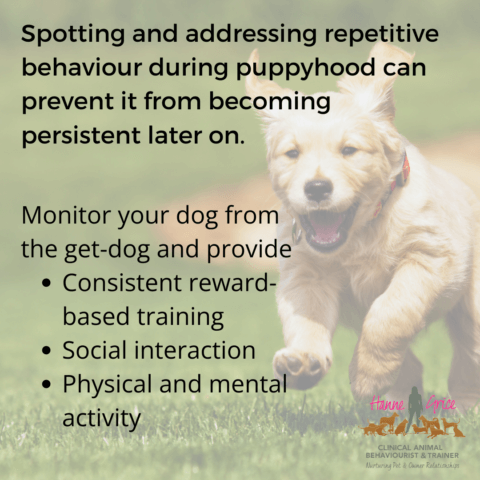
- Monitor your dog: Owners should be vigilant in monitoring their dogs for any signs of aggressiveness, hyperactivity, or inattention as these could be precursors or indicators of repetitive behaviours.
- Provide consistent reward-based training: Consistent training and providing a predictable environment can help reduce stress and potential repetitive behaviours in dogs. Consider your own interactions and where we may have inadvertently rewarded the dog for showing repetitive behaviour (e.g., jumping/tail spinning whilst preparing food) as dogs have been selectively bred to find human attention rewarding (Serpell, 2014).
- Social interaction: Providing opportunities for positive social interaction with other dogs, animals, and people from puppyhood, can help reduce the chances of repetitive behaviours developing, and help build the dog’s social skills and resiliency to every day encounters with others.
- Physical and mental activity: Ensuring that dogs get daily physical and mental exercise appropiate to their age, breed/conformation, state of heath etc, can be a preventive measure against repetitive behaviours.
Prevention better than cure
Activities that stimulate both the body and mind are essential for the dog’s well-being. These may include but are not limited to:
- Agility: This involves guiding your dog through a timed obstacle course. It challenges their physical agility and requires them to follow verbal/visual cues and focus on the task at hand.
- Interactive toys: Toys like puzzle feeders or treat-dispensing toys challenge your dog mentally as they figure out how to get the treat. It also provides physical stimulation as they manipulate the toy.
- Hide and seek: Hide treats or toys around the house, garden and out on walks, then let your dog find them. This game engages their sense of smell and problem-solving skills.
- Reward-based training: Teaching your dog new behaviours including tricks and honing current behaviours helps them to think, focus and provides physical activity, especially for tricks that involve movement. Choose behaviours that are suitable for your dog’s age, conformation and state of health.
- Herding exercises: Herding exercises or simulated herding games can be both physically and mentally stimulating – this may include chase (e.g., food) and stillness games, such as the food circuit game, using tail teasers and more.
- Nose work: Put your dog’s scent detection skills to work to find specific odours. It’s a great mental and physical workout.
- Fetch with a twist: If your dog enjoys ball play, then you could teach them to perform different tricks on cue before you throw the toy or use multiple balls and instruct them on which one to fetch.
- Maze games: Set up barriers in your home, or garden if you have one, and guide your dog through with treats/toys/and praise. This challenges their problem-solving skills and gives them a physical workout.
- Doggy playdates: Social interactions with other dogs can be mentally stimulating as they navigate doggy social cues. If your dog enjoys the company of others, then book in some dog walking dates to help provide some social interaction and play opportunities. Ensure you monitor any interactions closely and provide lots of opportunities for breaks from one another via search/sniffing games.
Expert advice
For further game ideas, see the book Playing With Your Dog. However, if you are already experiencing some issues with your dog that may include repetitive behaviour, then please speak with your veterinary surgeon, and seek the support of a registered Clinical Animal Behaviourist or Veterinary Behaviourist – check out the practitioner directory via the Animal Behaviour and Training Council.
References
- Denham, D., C., Bradshaw, J.W., Rooney, N. (2014) Repetitive behaviour in kennelled domestic dog: Stereotypical or not? Physiology & Behavior 128, 288-294.
- Frank D. Repetitive behaviors in cats and dogs: are they really a sign of obsessive-compulsive disorders (OCD)? (2013). The Canadian Veterinary Journal. 54(2):129-31. PMID: 23904634; PMCID: PMC3552586.
Sulkama, S., Salonen, M., Mikkola, S. et al. (2022) Aggressiveness, ADHD-like behaviour, and environment influence repetitive behaviour in dogs. Scientific Reports 12, 3520. https://doi.org/10.1038/s41598-022-07443-6 - Serpell, J. (Ed.). (2014) The domestic dog: its evolution, behaviour, and interactions with people (2nd ed), Cambridge University Press, Cambridge
Learn more about our classes
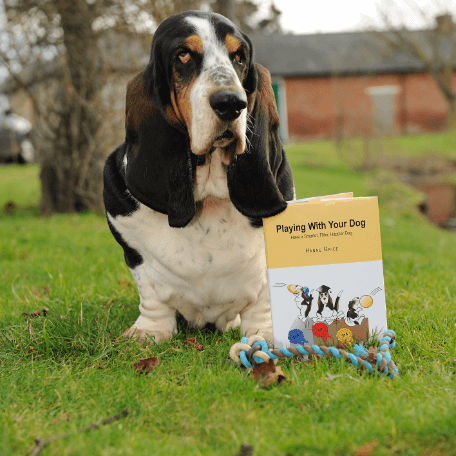
Get Hanne's Book
Playing With Your Dog will help any dog owner work out the games that are best suited for their pet to play throughout his life, from puppyhood to old age. The book also shares some tricks for all ages, group activities, and recommended toys that dogs will enjoy.

